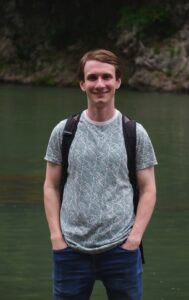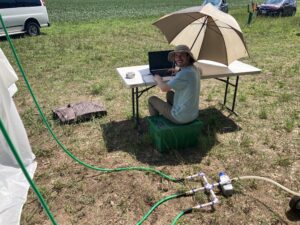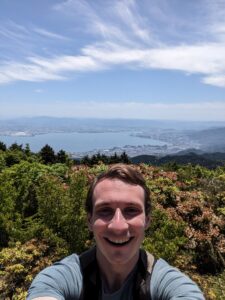Assessing the Global Climate in May 2024
NCEI News Feed
https://www.ncei.noaa.gov/news/global-climate-202405
NCEI News Feed
https://www.ncei.noaa.gov/news/global-climate-202405
NCEI News Feed
https://www.ncei.noaa.gov/news/global-climate-202405
NCEI News Feed
https://www.ncei.noaa.gov/news/global-climate-202405
NCEI News Feed
https://www.ncei.noaa.gov/news/global-climate-202405
NCEI News Feed
https://www.ncei.noaa.gov/news/global-climate-202405
NCEI News Feed
https://www.ncei.noaa.gov/news/global-climate-202405
NCEI News Feed
https://www.ncei.noaa.gov/news/global-climate-202405
NCEI News Feed
https://www.ncei.noaa.gov/news/global-climate-202405
NCEI News Feed
https://www.ncei.noaa.gov/news/global-climate-202405
NCEI News Feed
https://www.ncei.noaa.gov/news/global-climate-202405
NCEI News Feed
https://www.ncei.noaa.gov/news/global-climate-202405
NCEI News Feed
https://www.ncei.noaa.gov/news/global-climate-202405
NCEI News Feed
https://www.ncei.noaa.gov/news/global-climate-202405
NCEI News Feed
https://www.ncei.noaa.gov/news/global-climate-202405
NCEI News Feed
https://www.ncei.noaa.gov/news/global-climate-202405
NCEI News Feed
https://www.ncei.noaa.gov/news/global-climate-202405
NCEI News Feed
https://www.ncei.noaa.gov/news/global-climate-202405
NCEI News Feed
https://www.ncei.noaa.gov/news/global-climate-202405
NCEI News Feed
https://www.ncei.noaa.gov/news/global-climate-202405
NCEI News Feed
https://www.ncei.noaa.gov/news/global-climate-202405
NCEI News Feed
https://www.ncei.noaa.gov/news/global-climate-202405
NCEI News Feed
https://www.ncei.noaa.gov/news/global-climate-202405
NCEI News Feed
https://www.ncei.noaa.gov/news/global-climate-202405
NCEI News Feed
https://www.ncei.noaa.gov/news/global-climate-202405
NCEI News Feed
https://www.ncei.noaa.gov/news/global-climate-202405
NCEI News Feed
https://www.ncei.noaa.gov/news/global-climate-202405
NCEI News Feed
https://www.ncei.noaa.gov/news/global-climate-202405
NCEI News Feed
https://www.ncei.noaa.gov/news/global-climate-202405
NCEI News Feed
https://www.ncei.noaa.gov/news/global-climate-202405
NCEI News Feed
https://www.ncei.noaa.gov/news/global-climate-202405
NCEI News Feed
https://www.ncei.noaa.gov/news/global-climate-202405
NCEI News Feed
https://www.ncei.noaa.gov/news/global-climate-202405
NCEI News Feed
https://www.ncei.noaa.gov/news/global-climate-202405
NCEI News Feed
https://www.ncei.noaa.gov/news/global-climate-202405
NCEI News Feed
https://www.ncei.noaa.gov/news/global-climate-202405
NCEI News Feed
https://www.ncei.noaa.gov/news/global-climate-202405
NCEI News Feed
https://www.ncei.noaa.gov/news/global-climate-202405
NCEI News Feed
https://www.ncei.noaa.gov/news/global-climate-202405

The 1980s called, they want to check in on their atrazine-use policy.
While it can feel retro to talk about this herbicide that captured Wisconsin headlines over four decades ago, it remains a highly relevant topic in 2024.
Sam Brockschmidt is eager to explore that relevancy through a brand-new Wisconsin Water Resources Science-Policy Fellowship focused on evaluating existing atrazine data, gathering new data and analyzing current restrictions on atrazine use in parts of the state known as prohibition areas. In short, he said he will attempt to, “figure out if we have been improving groundwater quality in a comprehensive way.”
Groundwater monitoring in the 1980s and ‘90s found atrazine, used for killing weeds in farmers’ fields, was responsible for groundwater and drinking water contamination. In March 1991, the Wisconsin Department of Agriculture, Trade and Consumer Protection enacted its first restrictions on atrazine use, establishing an atrazine management area and six prohibition areas. That initial approach has now evolved into outright prohibition areas, which have grown to 101, representing about 1.2 million acres. These areas where no atrazine can be applied on corn and other crops are located primarily in central and southern Wisconsin but do exist elsewhere. In fact, 35 out of Wisconsin’s 72 counties have a prohibition area.
Brockschmidt’s project will quantify how a prohibition area is effective and how it’s not and will explore implications of both of those conditions.
If an area is effective, that could prompt calls to lift the restrictions. That, said Brockschmidt, is tricky. “Even if the prohibition area seems to be working, it’s not necessarily that we’ve solved the problem. Because the prohibition area is keeping the atrazine concentration in check, but if we went back to the way that things were before the prohibition area, we might just go back to the same problem we’ve had before where so much atrazine was getting into our drinking water. It’s a very complicated issue that this project is tackling. But step one is just figuring out what data we have and are these prohibition areas actually effective.”
On the flipside, an ineffective zone is likely that way due to a multitude of factors. For example, he noted, “You’d think that if you stopped using atrazine in a place and then you keep testing your groundwater eventually your groundwater will have lower concentrations.” However, he cited one of Mother Nature’s maxims: water goes wherever it likes and doesn’t respect an artificial boundary like a prohibition zone.
“You might have a prohibition area on one side of the road and then on the other side of the road they’re just free to use as much atrazine as they want within the scope of the current regulations on it. So, the atrazine that is applied outside of the prohibition areas may get into prohibition areas. It all has to do with soil type and the hydrogeology of the subsurface,” he said.
Earlier this month Brockschmidt, who has a master’s degree in geosciences from UW-Madison, began his one-year fellowship that is sponsored by DATCP and the University of Wisconsin Water Resources Institute. “This is our first time creating such a position,” said Carla Romano, groundwater specialist with DATCP. “We believe that partnering with a university is an excellent way to attract individuals interested in research careers with significant societal impact. This project requires someone who is dedicated to such a path, and a university partnership is the perfect avenue to find and nurture this talent.”
For his part, Brockschmidt said the opportunity will afford him the chance to evaluate the two long-term paths he faces. At the fellowship’s conclusion, he will either pursue a career in a state agency or one in academia.
In the meantime, he said one appealing aspect of this fellowship is the chance to engage with people about atrazine. It’s a product that is useful in agriculture. It is relatively inexpensive and highly effective, which could improve crop yields and increase income. But it does have deleterious effects on the water people drink. “Part of the project is that I’m going to be going out and collecting new samples of people’s drinking water. I’ll be at their homes so I’m going to be interacting with people, maybe learning about them and writing their stories of how these prohibition areas impact them,” said Brockschmidt. “I’m really excited to get to know some people here in Wisconsin and learn what their perspectives are from the other side of these regulations.”

He will also enjoy free time in the coming year, engaging in outdoor pursuits like camping and hiking. In fact, immediately before heading to the Madison headquarters of DATCP where he will be stationed, Brockschmidt slingshot from a 10-day hiking trip in Japan, to an overnight in Chicago and then the following day departed for Scotland on a college-sponsored trip. In that compressed time span, he hiked divergent terrains, both in the name of reveling in the outdoors.

News Release | WRI
https://www.wri.wisc.edu/news/brand-new-fellowship-to-assess-atrazine-use-policy/

This is part one of a two-part series on heat islands around the Great Lakes. Part one is on the human health cost. Part two is on the science behind urban heat islands, solutions to the complex problem, and the role the Great Lakes play.
In Cleveland, Ohio, it’s best to leave the city proper and head to the suburbs for a big outdoor celebration.
Great Lakes Now
https://www.greatlakesnow.org/2024/06/heat-islands-in-the-great-lakes-the-human-health-cost/
The Biden Administration is providing $60 million for climate-adaptation training to students living in nine ecosystems, including the western Lake Erie shoreline in Ohio. Ohio State University is getting $4.85 million of Inflation Reduction Act funding to make first-ever “climate-ready” training affordable. Read the full story by The Toledo Blade.
Great Lakes Commission
https://www.glc.org/dailynews/20240612-climate-training
The Great Lakes freighter Michipicoten hobbled near Isle Royale, Michigan, over the weekend suffered a 13-foot crack in its hull, but the mishap likely wasn’t caused by an underwater collision as originally thought. Now, the Coast Guard suspects a stress fracture. Read the full story by the Star Tribune.
Great Lakes Commission
https://www.glc.org/dailynews/20240612-freighter-crack
From the electrification of major cargo ports to sustainability improvements for Great Lakes ferries, a first-of-its-kind statewide “maritime strategy” could offer a roadmap toward a potential green future for shipping and boating in Michigan. Read the full story by MLive.
Great Lakes Commission
https://www.glc.org/dailynews/20240612-green-shipping
In 2021, a start-up was denied a county permit that would’ve allowed the start-up to operate a pumping facility in Bayfield County, Wisconsin, near Lake Superior. The Wisconsin Court of Appeals’ decision to prevent pumping is the latest development in a years-long legal battle. Read the full story by Wisconsin Public Radio.
Great Lakes Commission
https://www.glc.org/dailynews/20240612-pumping-denied
A total of seven ‘significant’ spills have occurred on Algoma Steel property on the St. Marys River in Sault Ste. Marie, Ontario, in the past five years. A local environmentalist says he has uncovered additional spills that have not yet been reported to the public. Read the full story by SooToday.
Great Lakes Commission
https://www.glc.org/dailynews/20240612-algoma-spills
Some Michigan communities have considered a technology that’s just beginning to be used in the United States: floating solar panels. Researchers at Cornell University are testing the technology. Read the full story by Bridge Michigan.
Great Lakes Commission
https://www.glc.org/dailynews/20240612-water-panels
The Detroit River Watershed Management Plan, developed in response to the 2021 summer rainstorms and flooding, aims to improve water quality and address flood risks in Detroit. Supported by local and federal agencies, the plan encourages residents to engage in green infrastructure projects and promotes the creation of climate-resilient neighborhoods. Read the full story by Bridge Detroit.
Great Lakes Commission
https://www.glc.org/dailynews/20240612-detroit-watershed-plan
Vessels in the Detroit River don’t have to dock to get deliveries; the J.W. Westcott company brings mail and supplies right to them as they travel along the river. The company turns 150 years old this year. Read the full story by the CBC.
Great Lakes Commission
https://www.glc.org/dailynews/20240612-river-mail
An adaptive sailing program on Lake Michigan provides people with disabilities the opportunity to sail using specialized equipment and boats. Started 34 years ago, the program has become a transformative experience for participants. Read the full story by WFLD-TV – Chicago, IL.
Great Lakes Commission
https://www.glc.org/dailynews/20240612-adaptive-sailing
On June 11, 1908, Dan Seavey commandeered a Great Lakes cargo ship and sailed it to Chicago. “Roaring” Dan Seavey is known as the only man to be arrested as a pirate on Lake Michigan. Read the full story by WWTV-TV – Cadillac, MI.
Great Lakes Commission
https://www.glc.org/dailynews/20240612-great-lakes-pirate